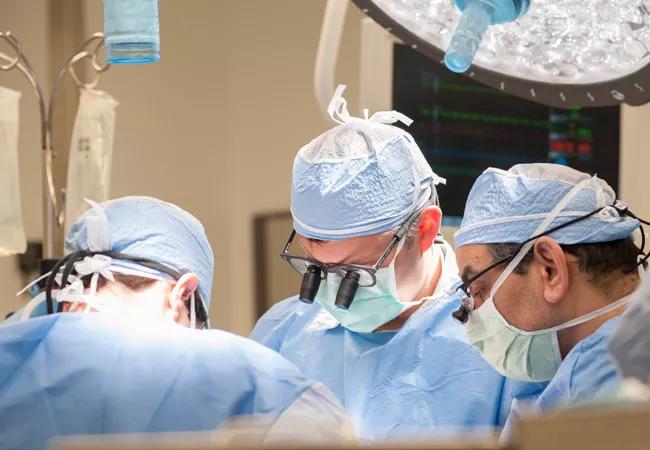An analysis of resource utilization

Patients who experience hepatopulmonary syndrome (HPS) who receive orthotopic liver transplantation (OLT) require greater hospital resource utilization than patients without HPS, according to a study of Cleveland Clinic’s experience recently published in Transplant Direct.
Advertisement
Cleveland Clinic is a non-profit academic medical center. Advertising on our site helps support our mission. We do not endorse non-Cleveland Clinic products or services. Policy
HPS, or intrapulmonary vascular dilations and intrapulmonary shunting causing poor arterial oxygenation, is found in 10 to 32% of patients with cirrhosis under evaluation for OLT. This comorbidity confers extra points to model for end-stage liver disease when partial pressure arterial oxygen is less than 60 mm Hg, but patients who receive transplant often require longer intensive care unit (ICU) stays and expensive postoperative respiratory rehabilitation.
“Other studies have shown that resource utilization increases, but not by how much,” notes Cristiano Quintini, MD, senior author of the study and Director of Liver Transplantation at Cleveland Clinic. “While no patient should be left behind because of cost, our study sought to quantify this resource utilization to potentially help liver transplant centers decide whether this is a population they would take on or refer to centers with more resources.”
Cleveland Clinic’s Liver Transplant program is one of the largest programs in the nation and performed over 160 transplants in 2019. The program is a member of the Ohio Solid Organ Transplant Consortium and the United Network for Organ Sharing. This study examined 789 adult patients who underwent OLT at Cleveland Clinic from 2005 to 2015 and analyzed 767 surgeries after exclusions for retransplant and missing medical information.
Researchers measured all technical and professional and direct and indirect costs as cost primary outcome and inflated all cases to 2015 U.S. dollars. Analyses were adjusted for potential confounding variables, and multivariable log-linear regression was utilized.
Advertisement
The overall costs for patients with HPS were 27% higher than for patients without HPS (ratio of geometric means, 1.27; 98.3% confidence interval [CI], 1.09-1.47; P < 0). While no differences were observed in the rate of six-month hospital readmissions, HPS diagnosis was independently associated with longer hospital stay and longer ICU stay (P < 0.001 for both). Patients with HPS were 15 times more likely to be discharged to an extended care facility (odds ratio, 14.9; 97.5% CI, 4.98-44.29; P < 0.001).
“At an incremental level, most increases for patients with HPS were modest,” says Jacek Cywinski, MD, first author of the study and staffi n the Department of General Anesthesiology at Cleveland Clinic. “But we saw a sixfold increase in nursing cost, and 2.6 times higher respiratory care costs. It’s critical to note that we found the biggest proportional increase in costs for these patients in services with relatively low contribution to the total cost of care.”
While the limitations of cost transparency and insurance models prevent a multi-institutional study of this kind, findings from Cleveland Clinic’s experience can inform other transplant centers of relative costs and aid in decision-making regarding referral of patients with comorbidities like HPS.
“While it’s tough to generalize from one institution’s experience, we hope our findings can allow other institutions to make similar analyses,” says Dr. Quintini. “They can then decide how to utilize those resources, and whether patients with HPS would be better served at more resource-heavy institutions.”
Advertisement
Advertisement

Study reveals key differences between antibiotics, but treatment decisions should still consider patient factors

Key points highlight the critical role of surveillance, as well as opportunities for further advancement in genetic counseling

Potentially cost-effective addition to standard GERD management in post-transplant patients

Findings could help clinicians make more informed decisions about medication recommendations

Insights from Dr. de Buck on his background, colorectal surgery and the future of IBD care

Retrospective analysis looks at data from more than 5000 patients across 40 years

Surgical intervention linked to increased lifespan and reduced complications

Diagnostic and management pearls for an emerging condition linking tick-bites to meat allergy